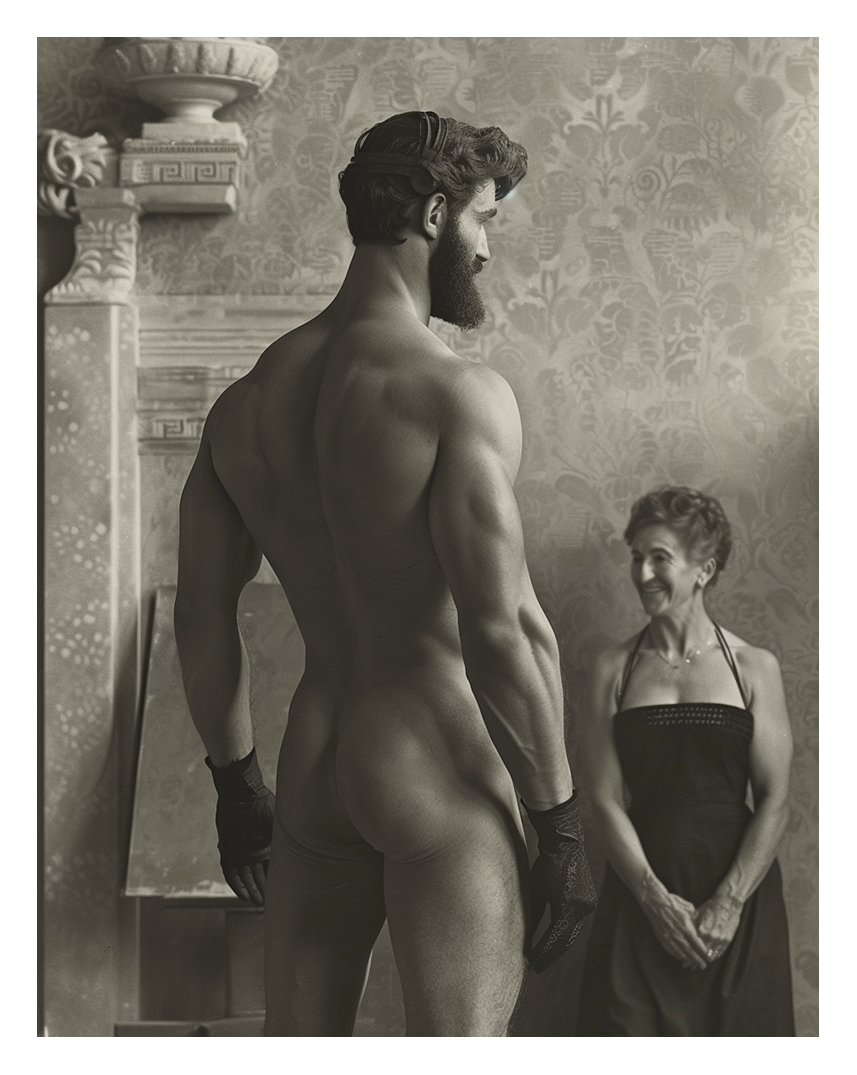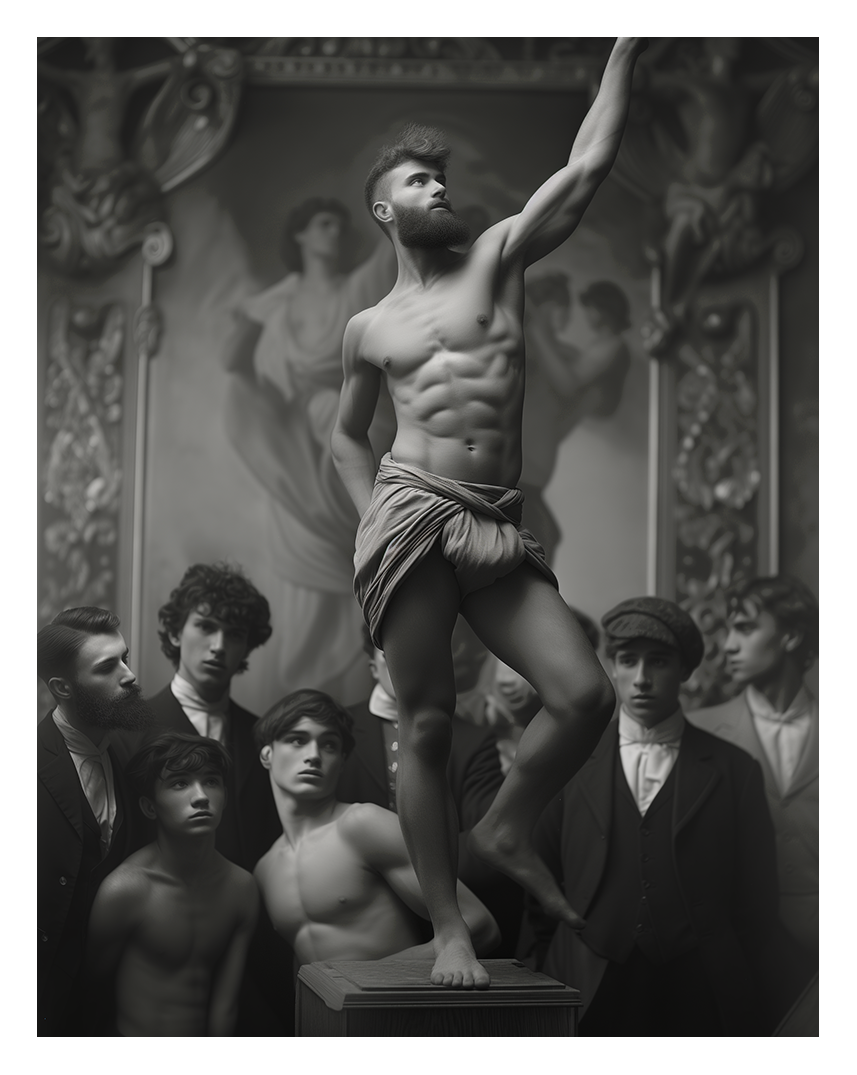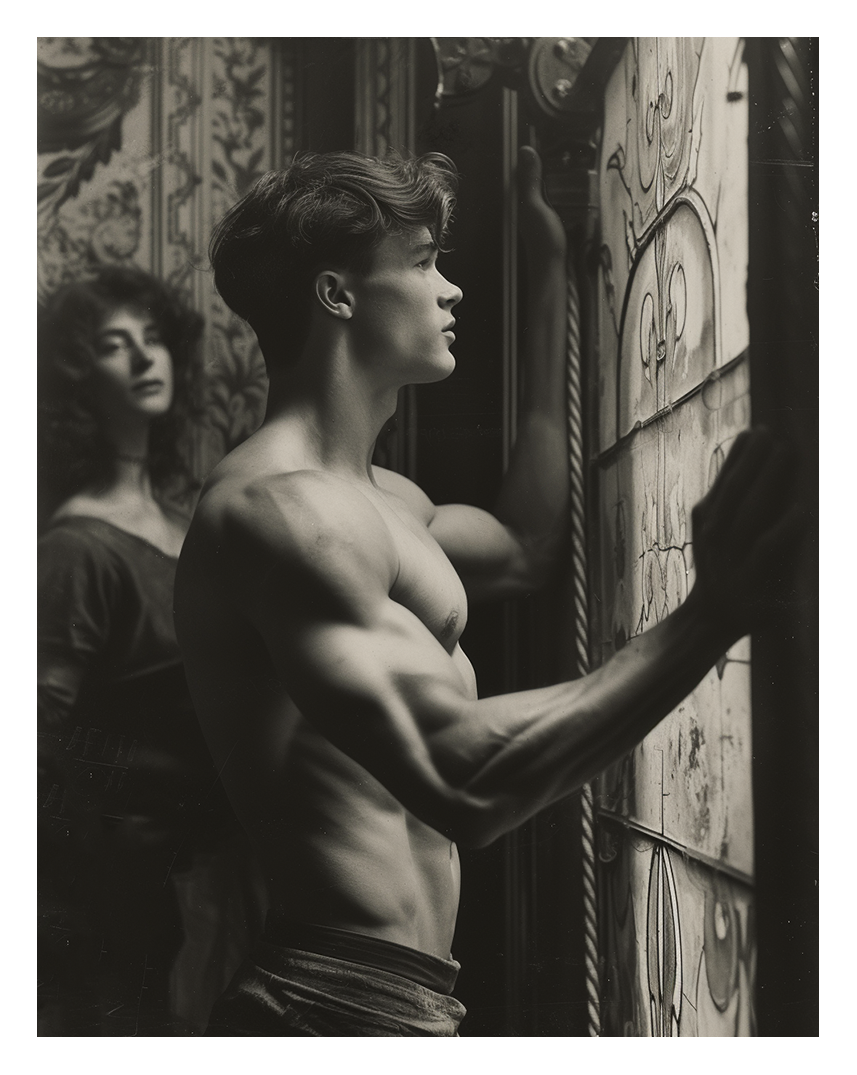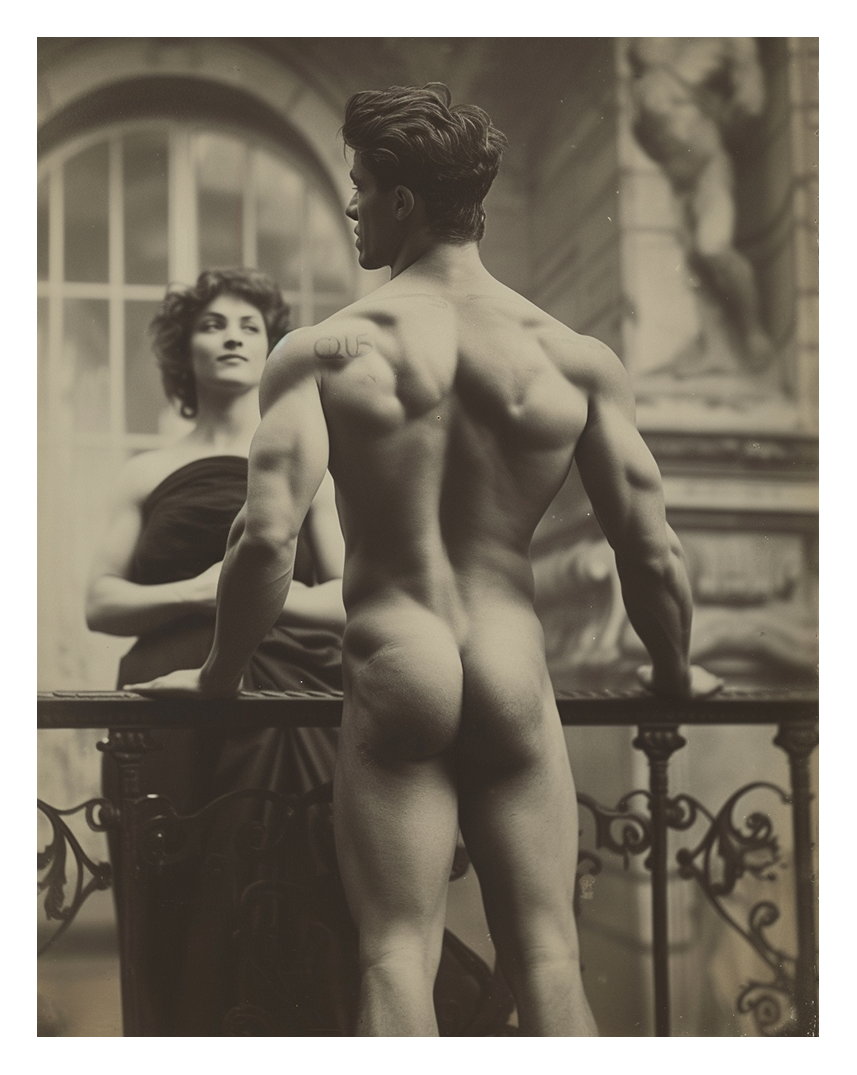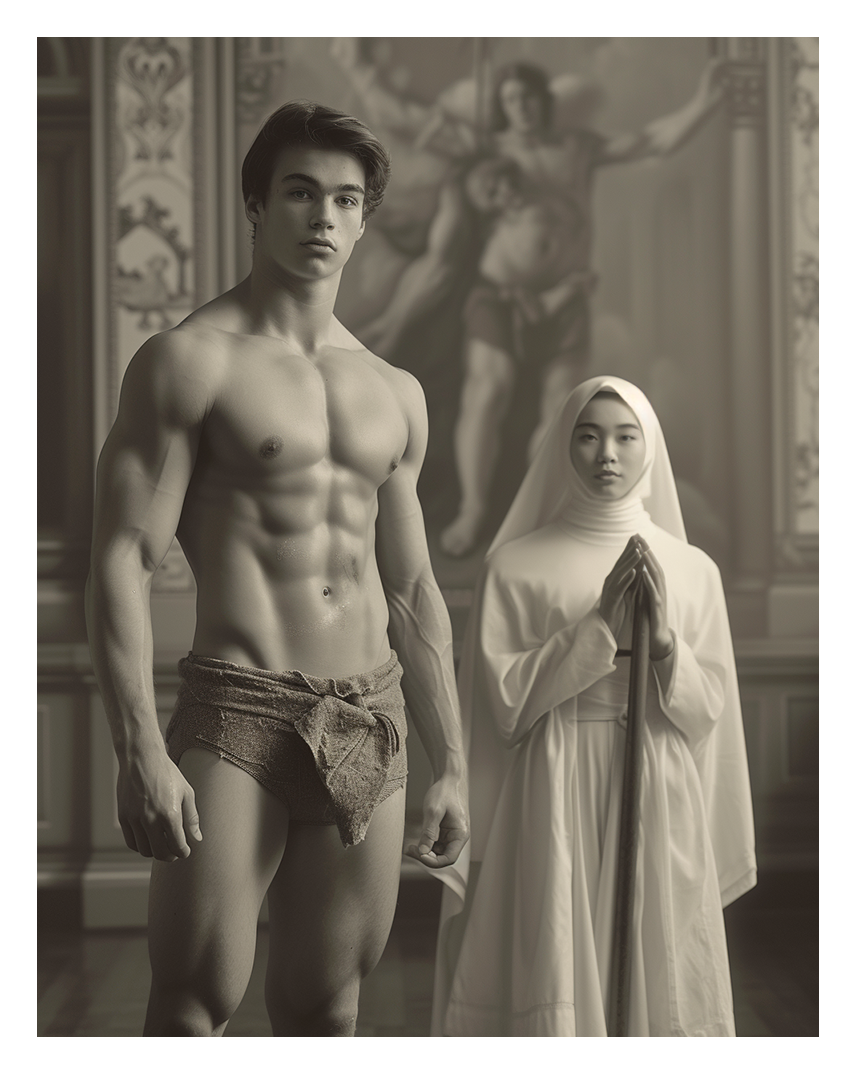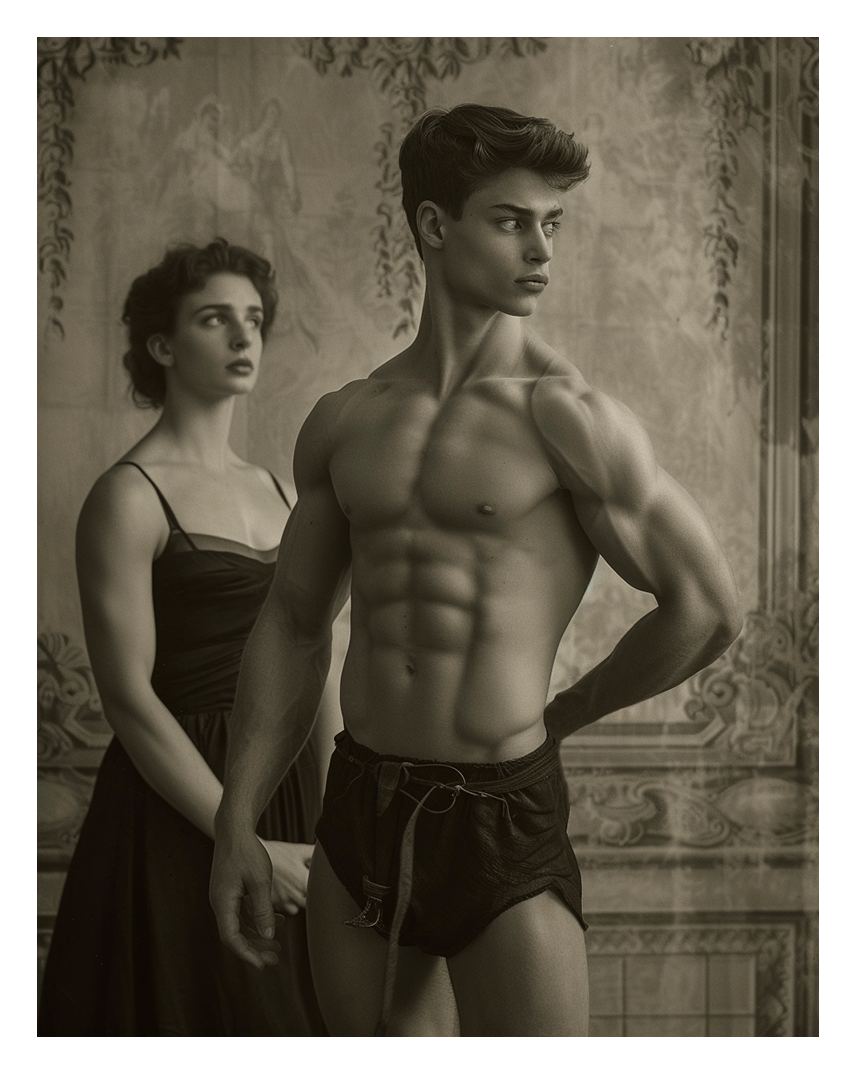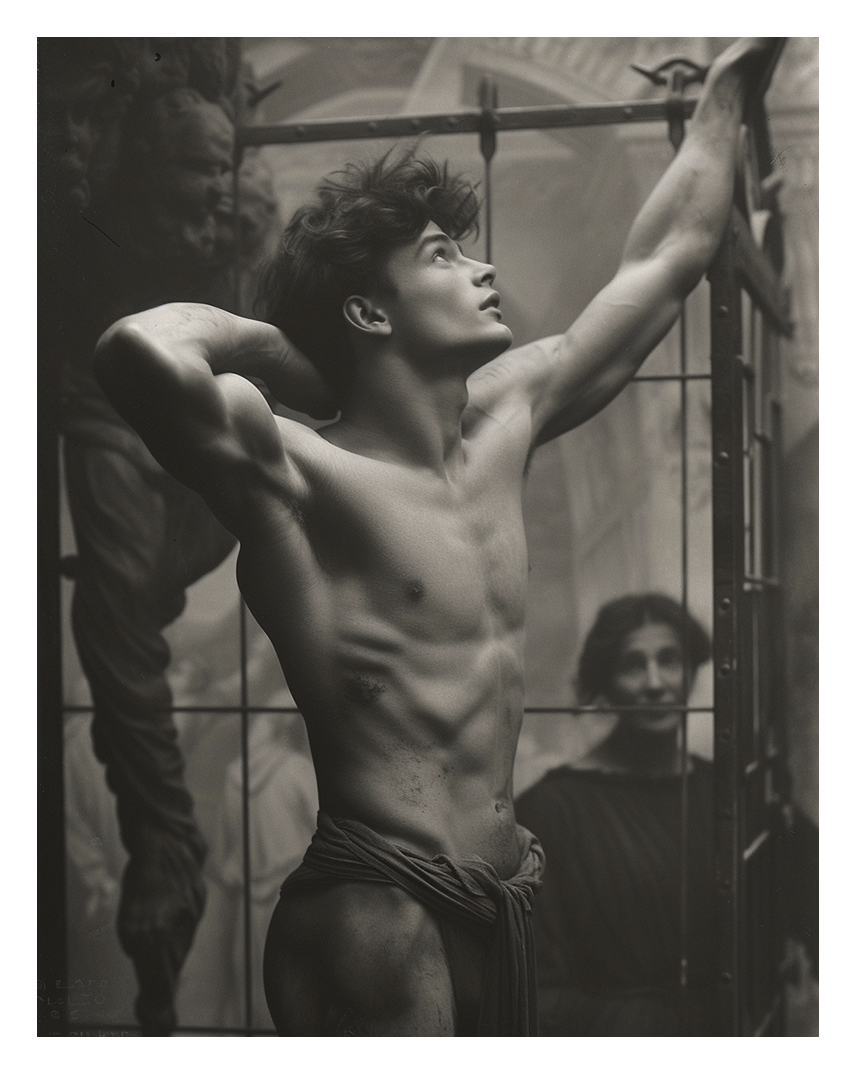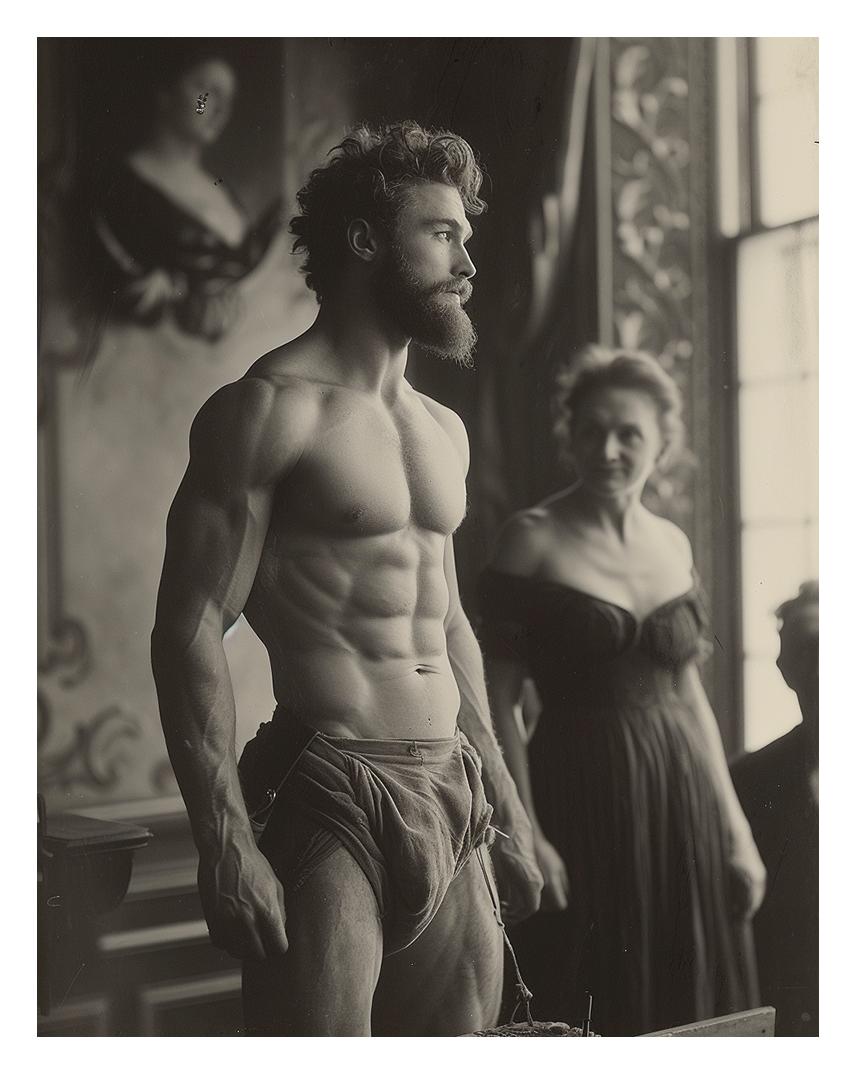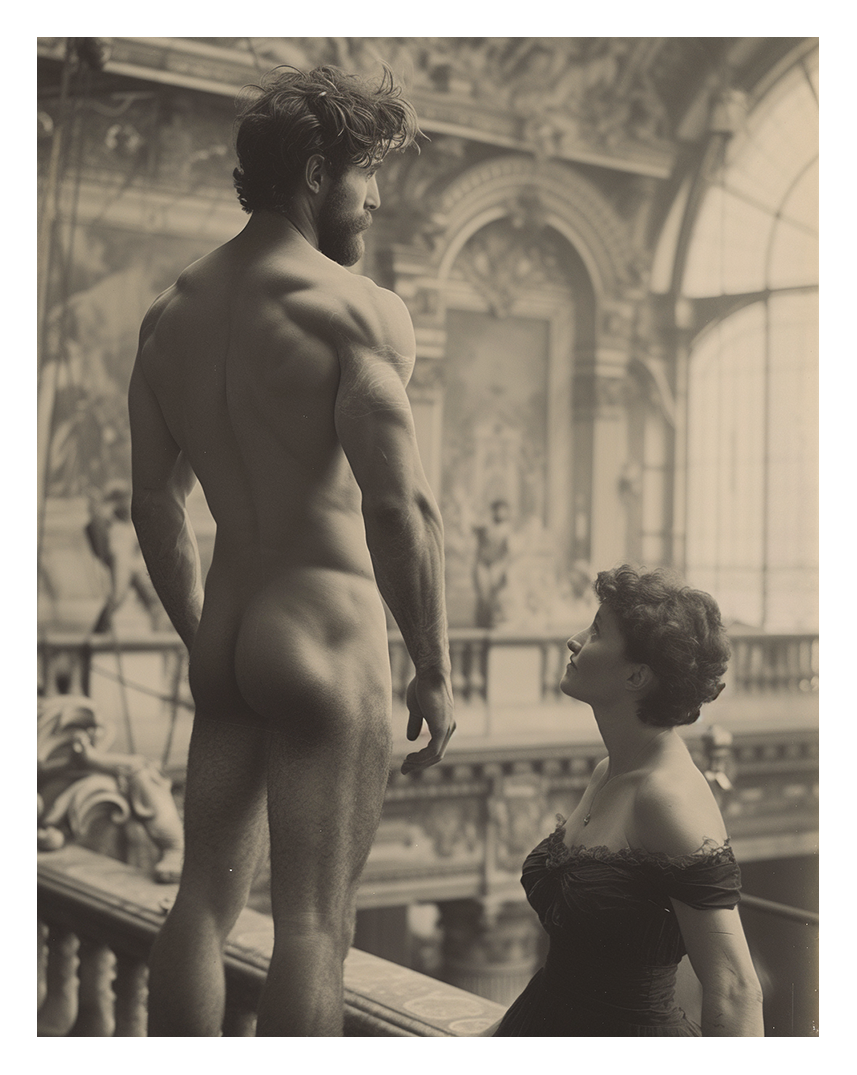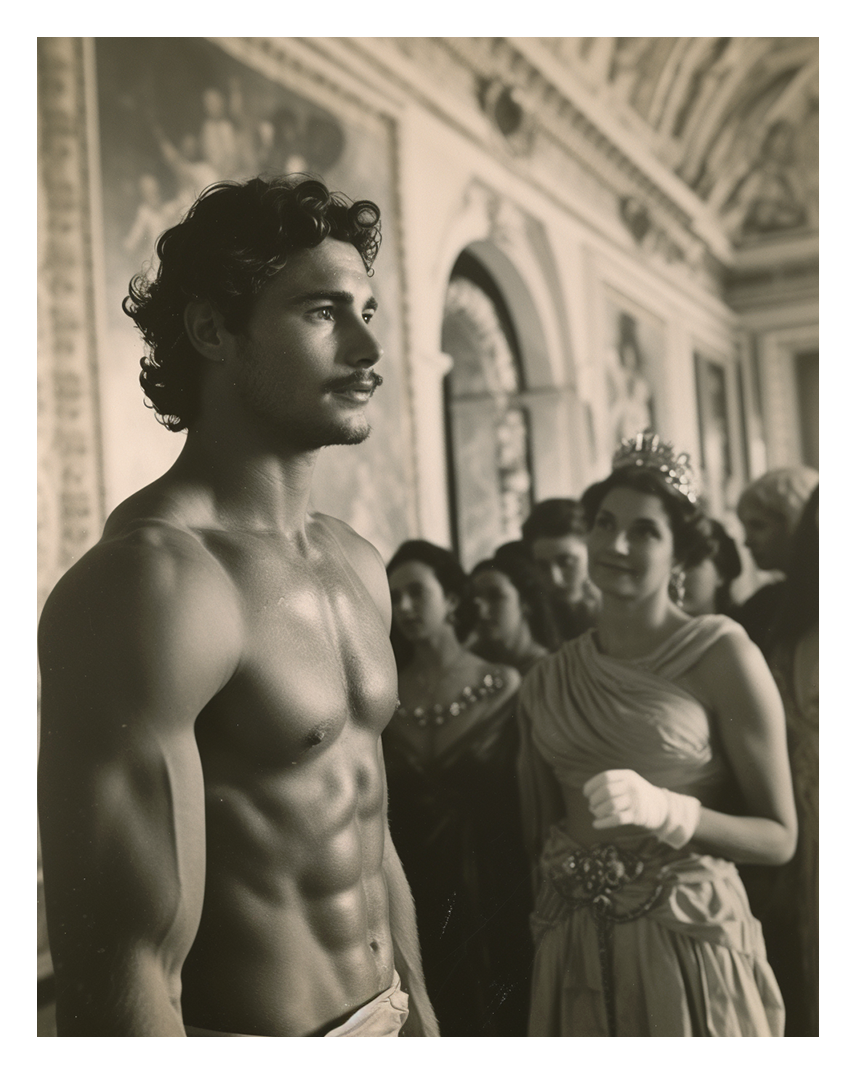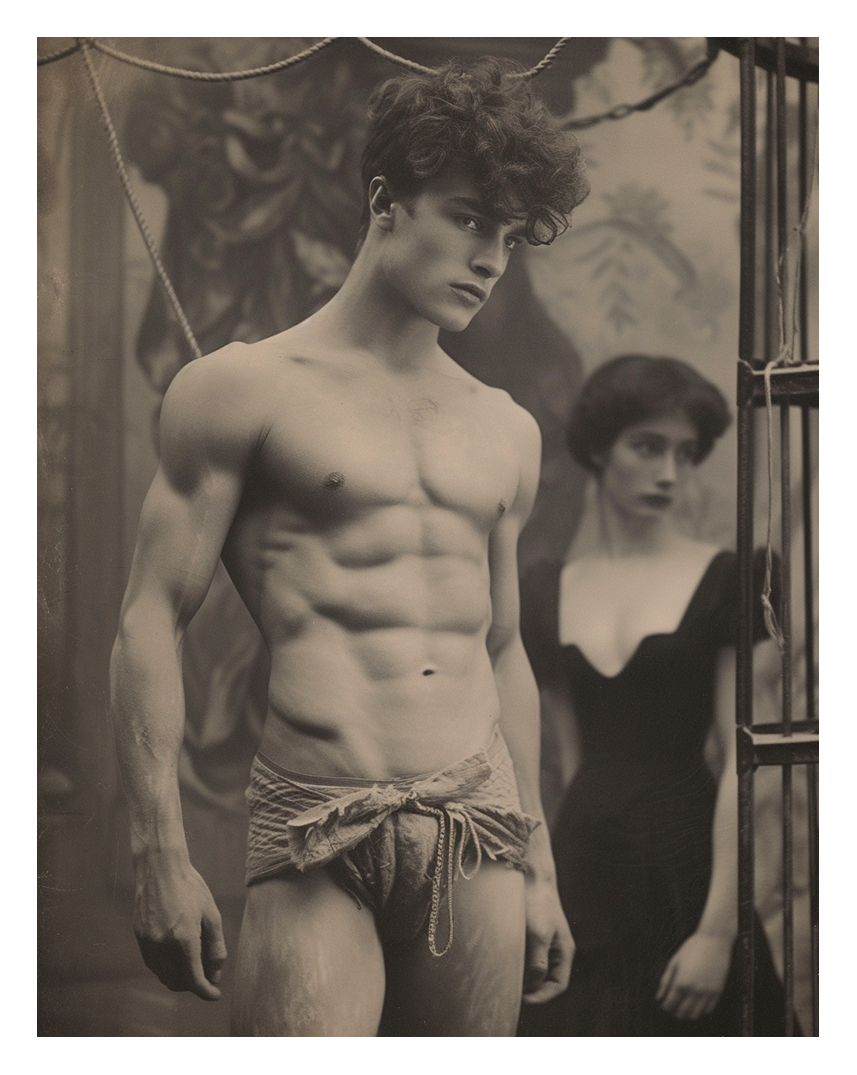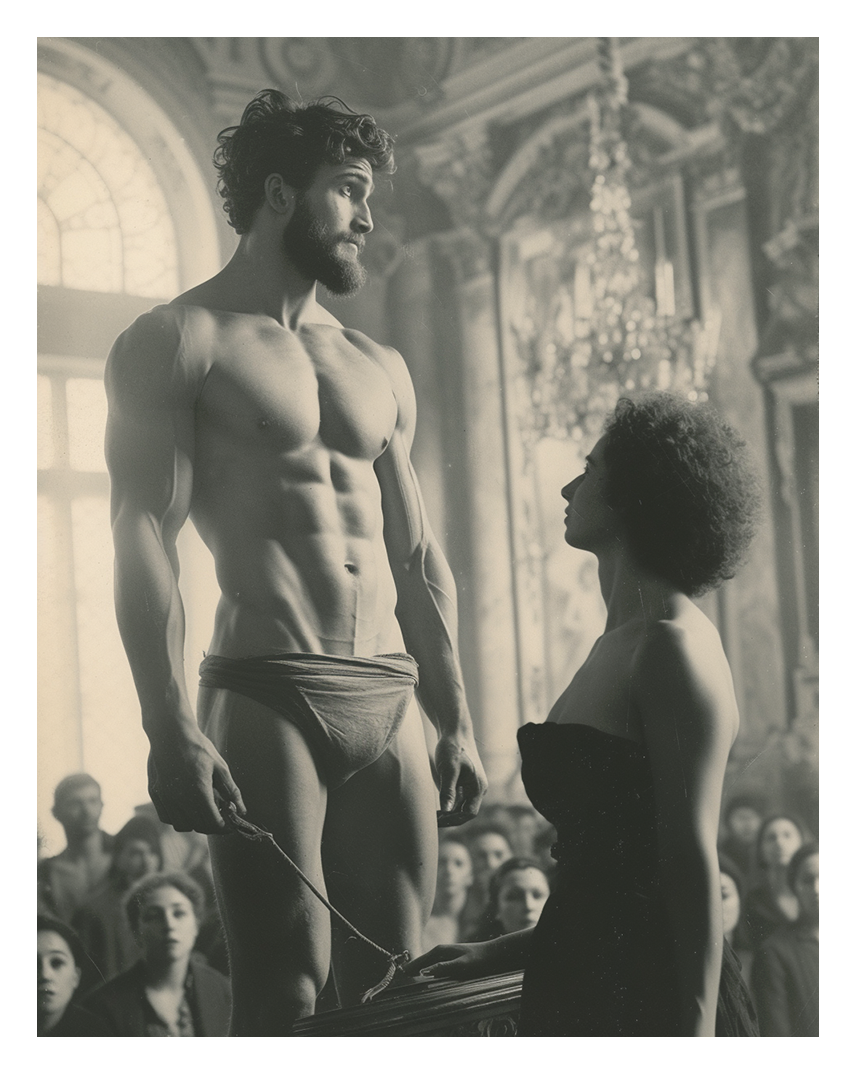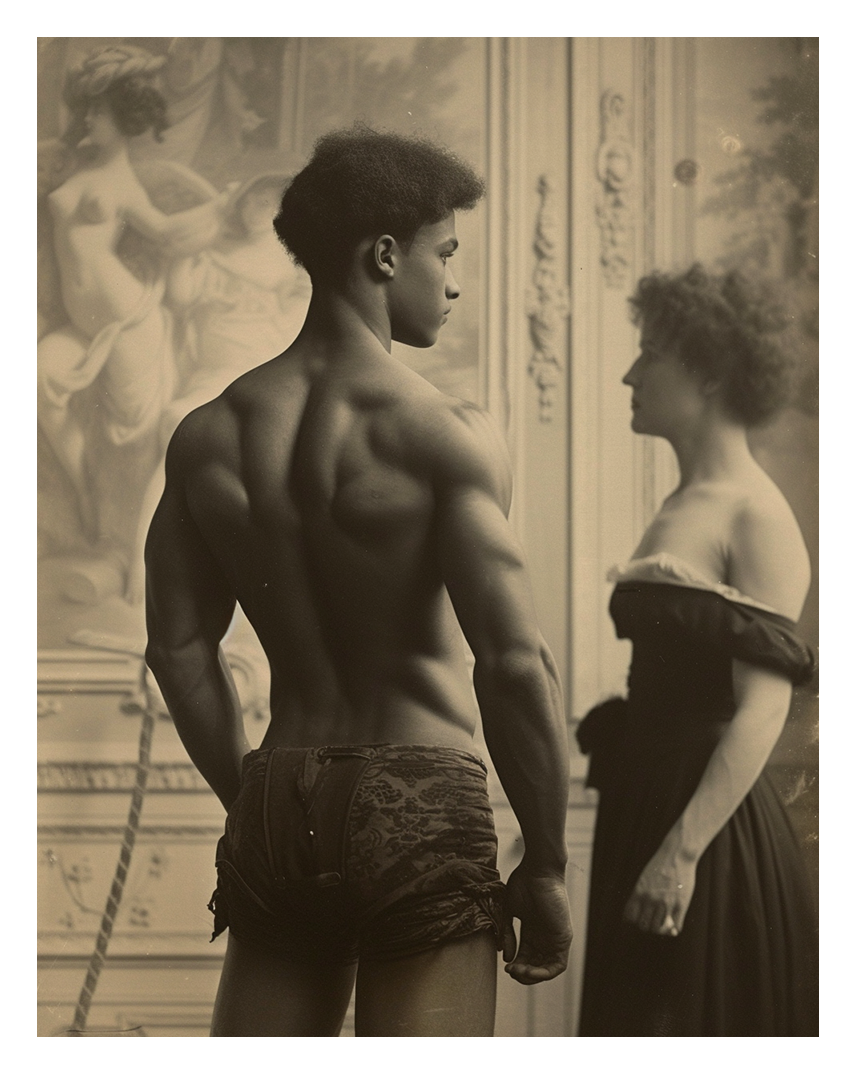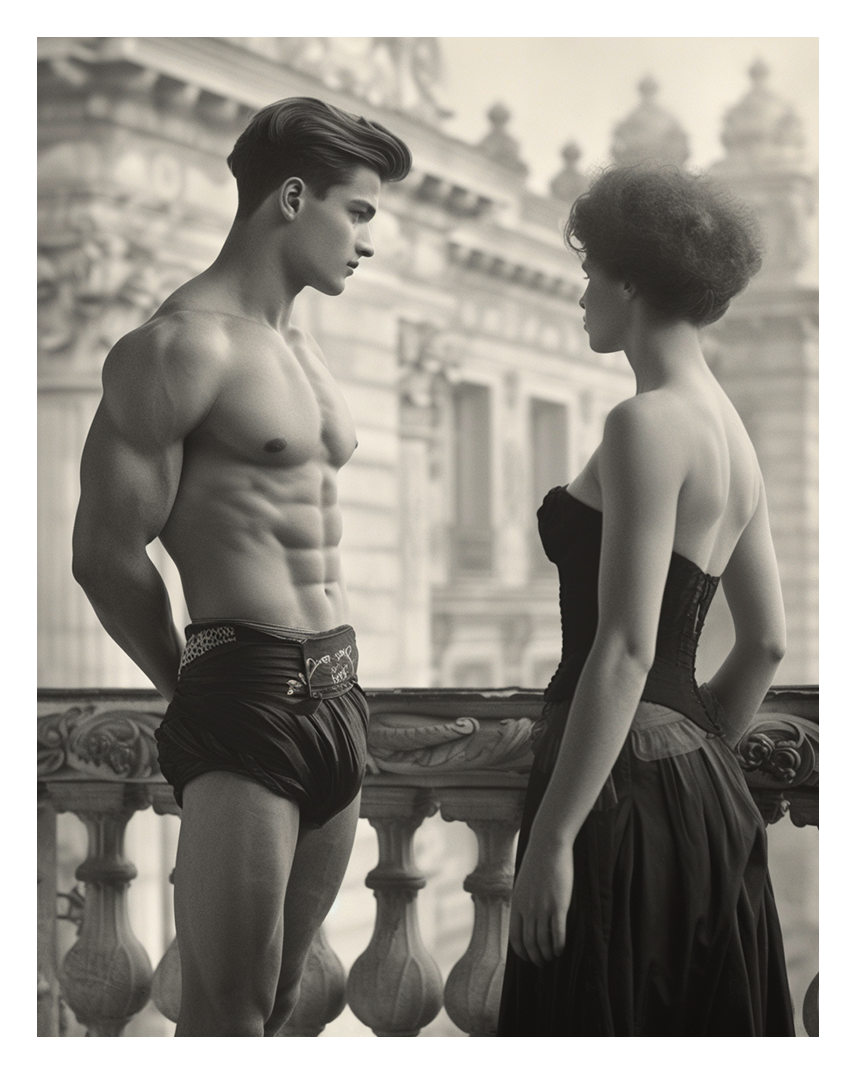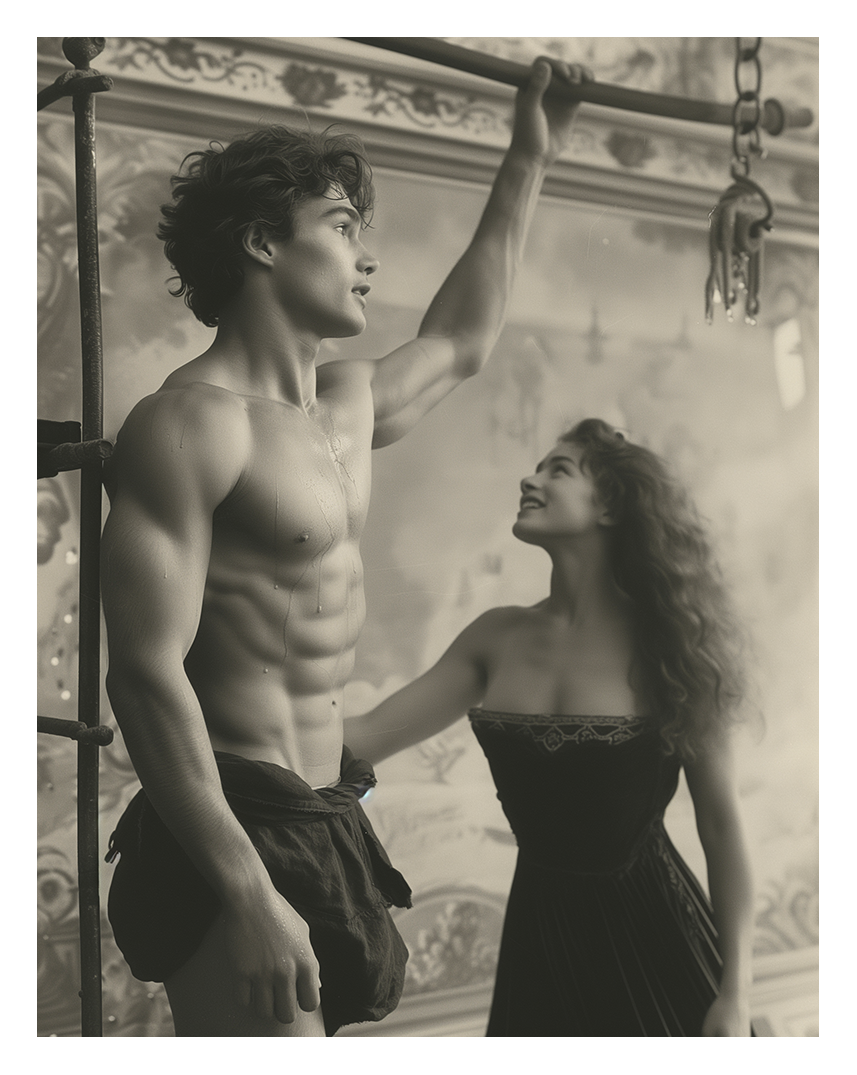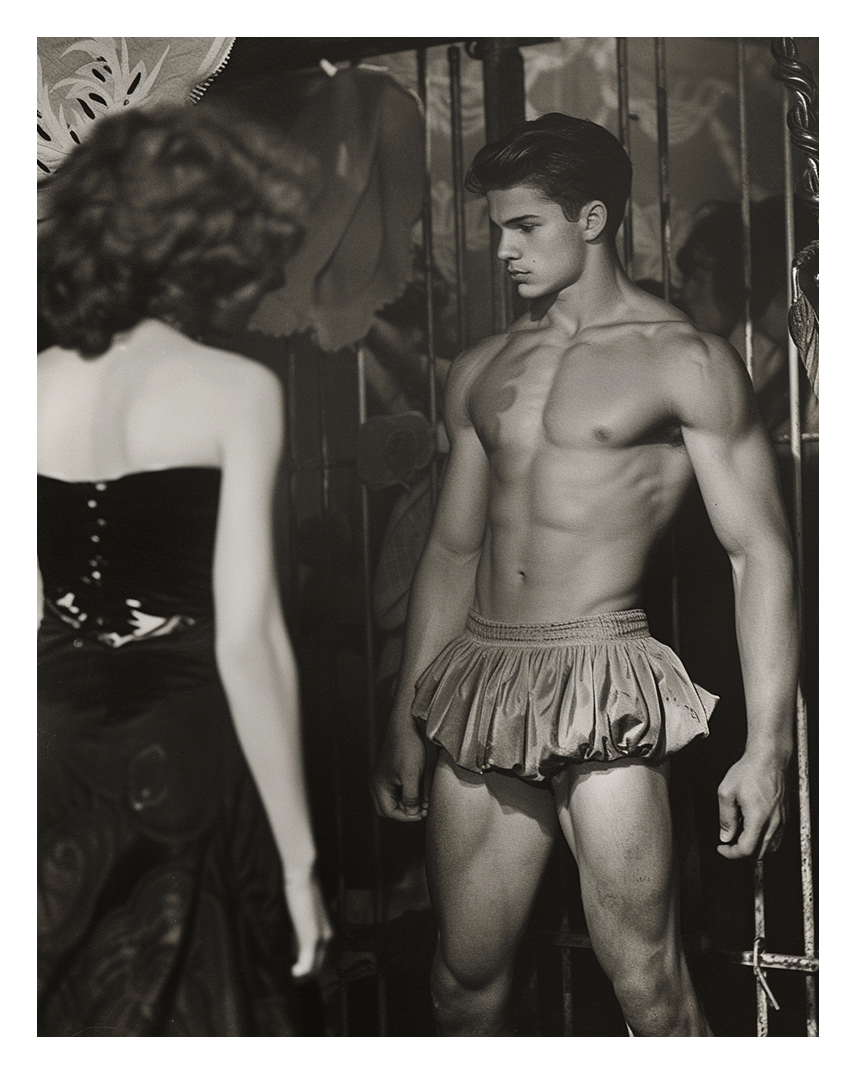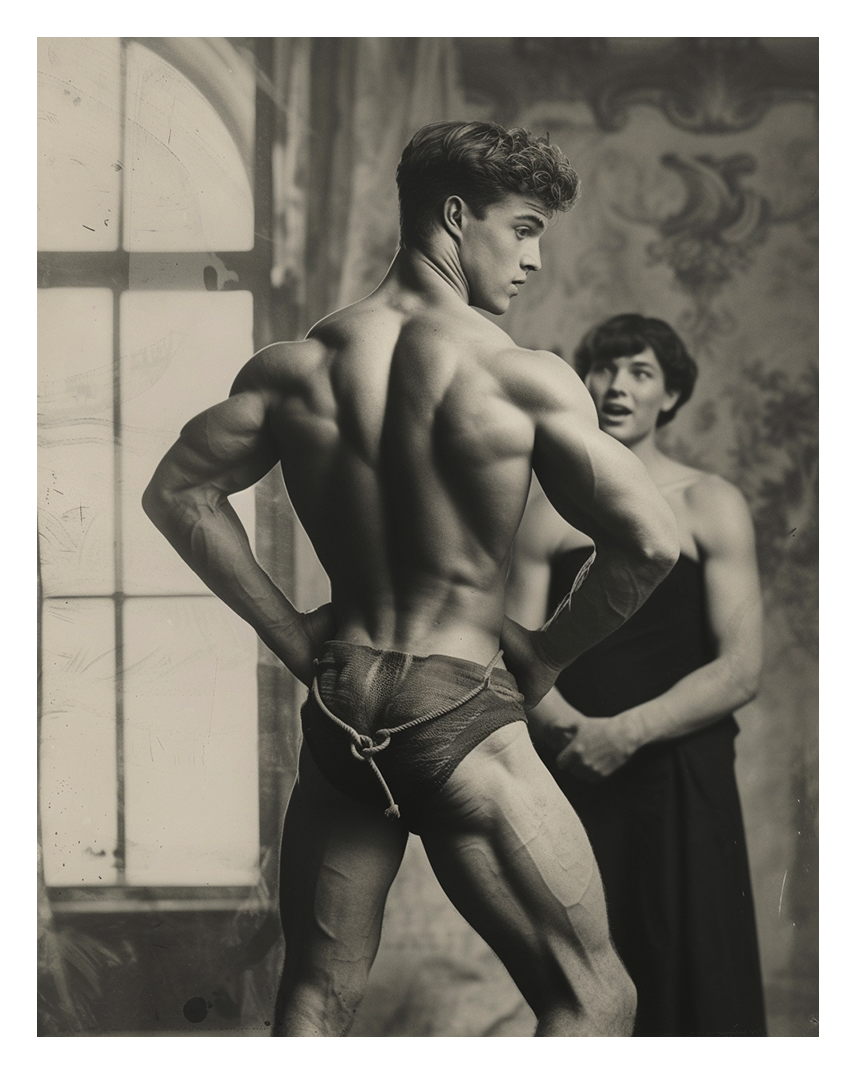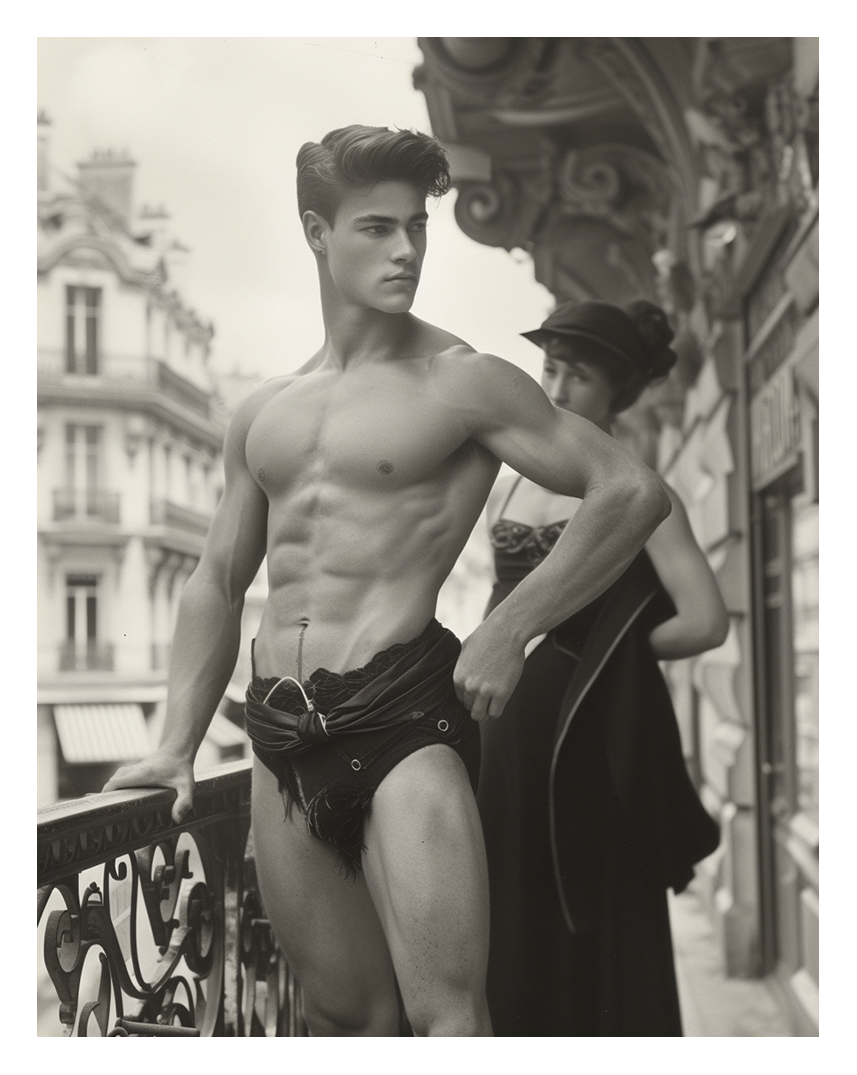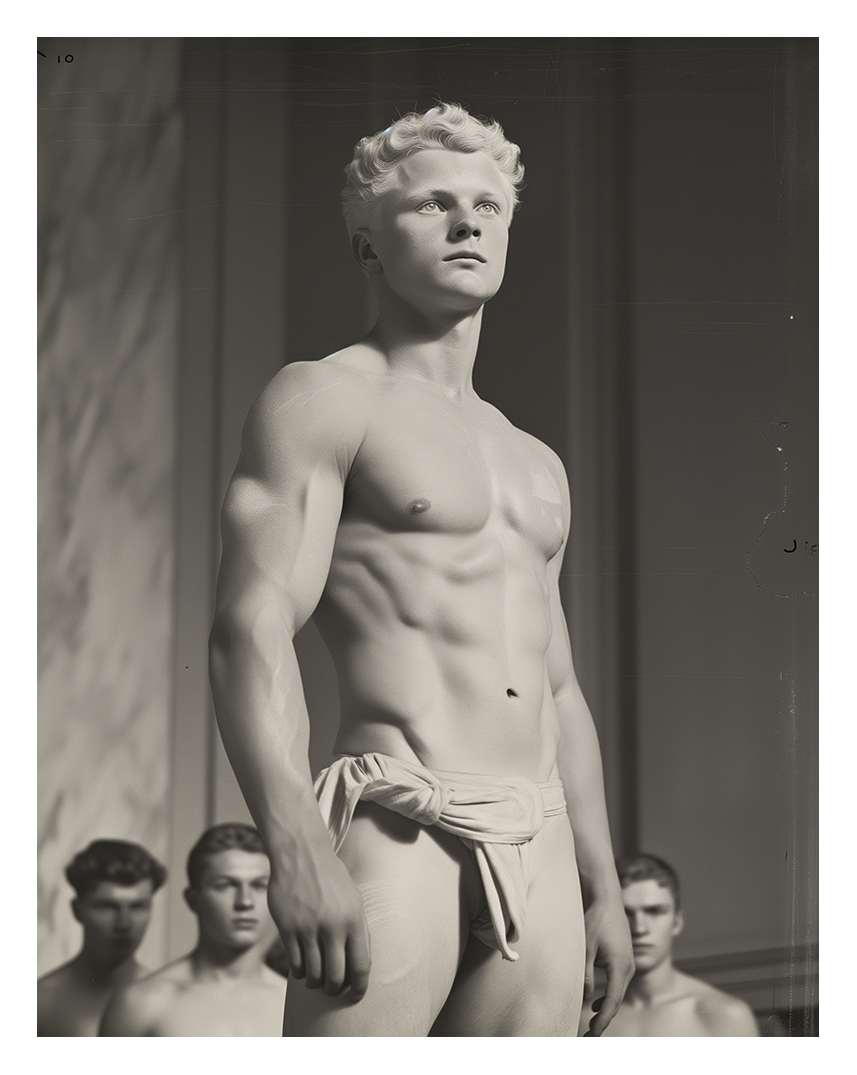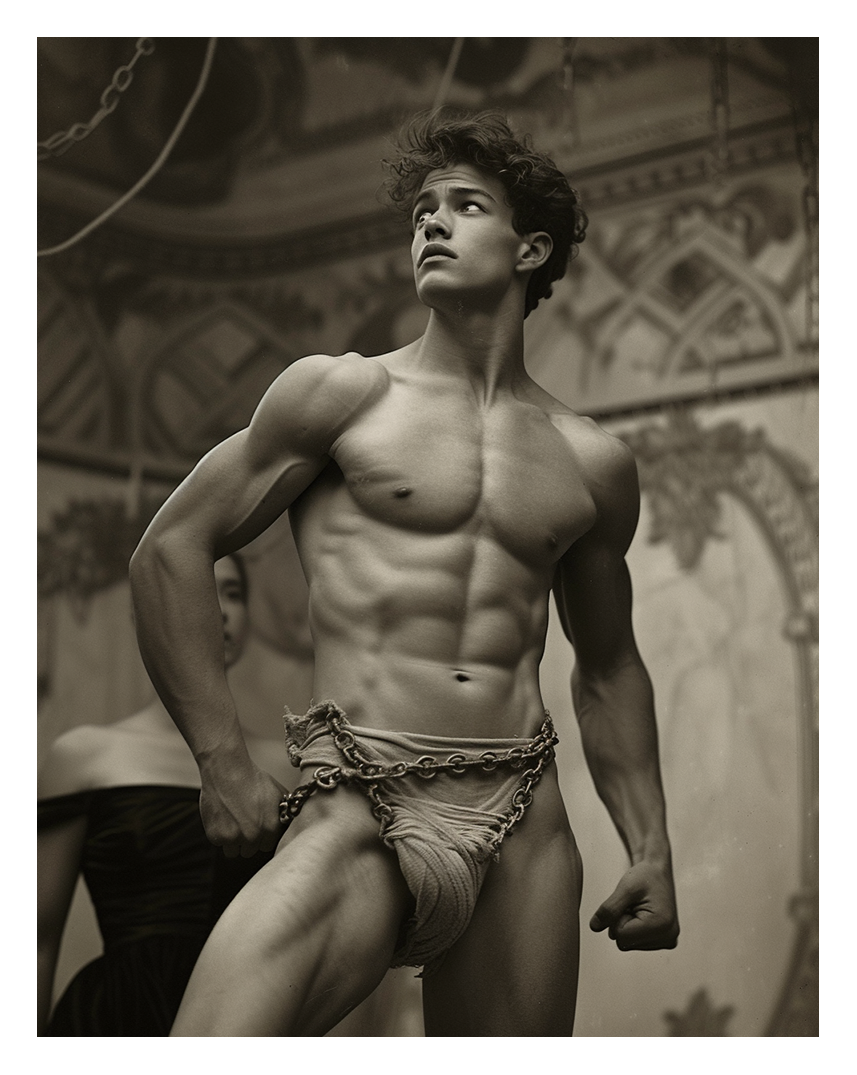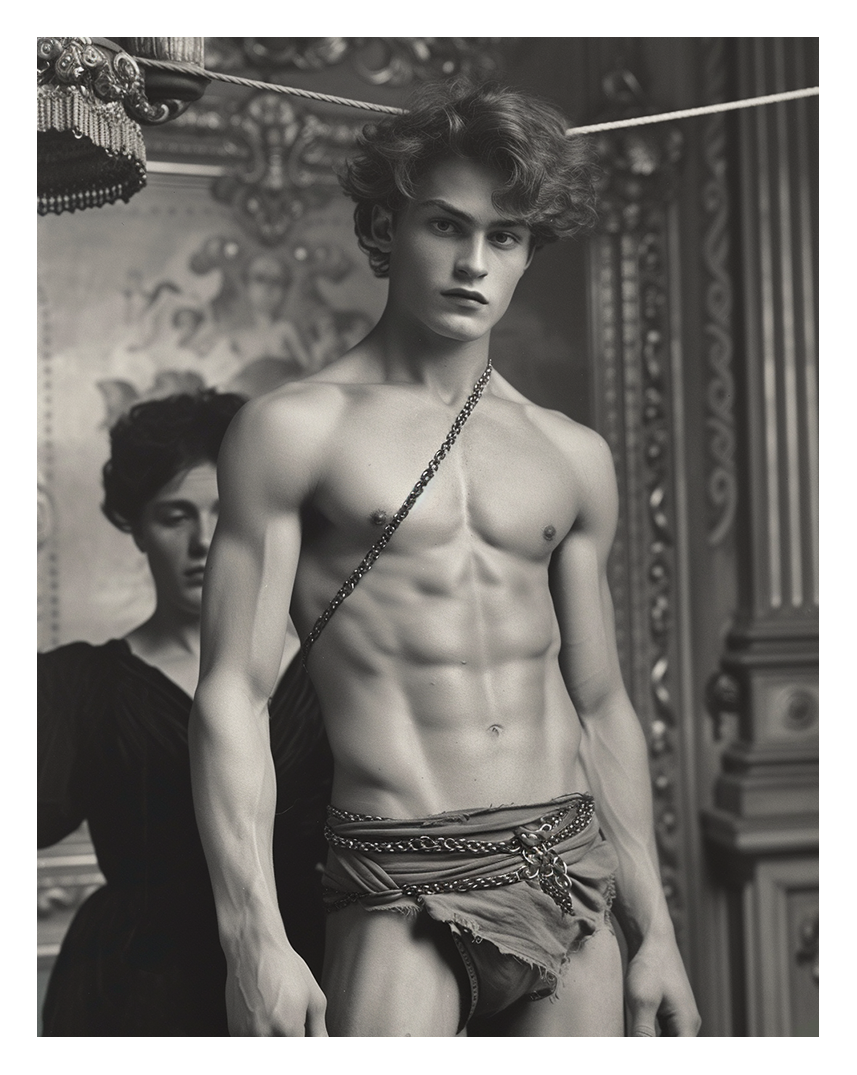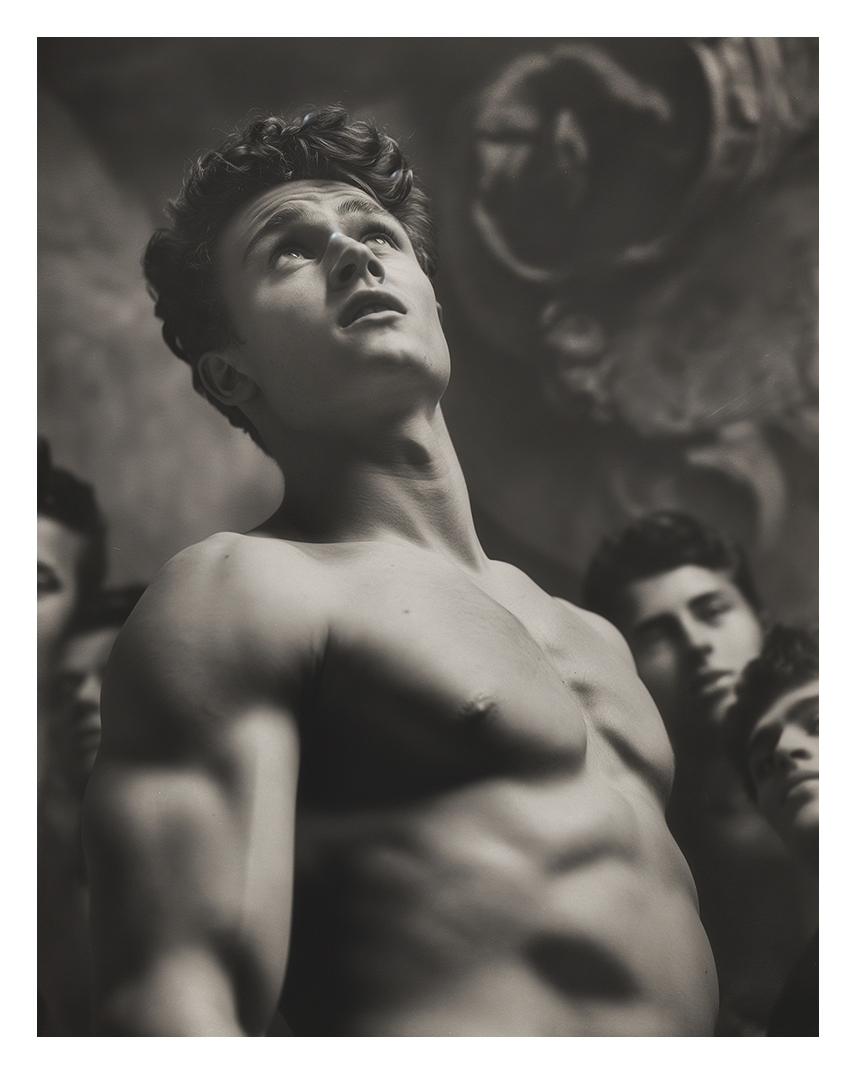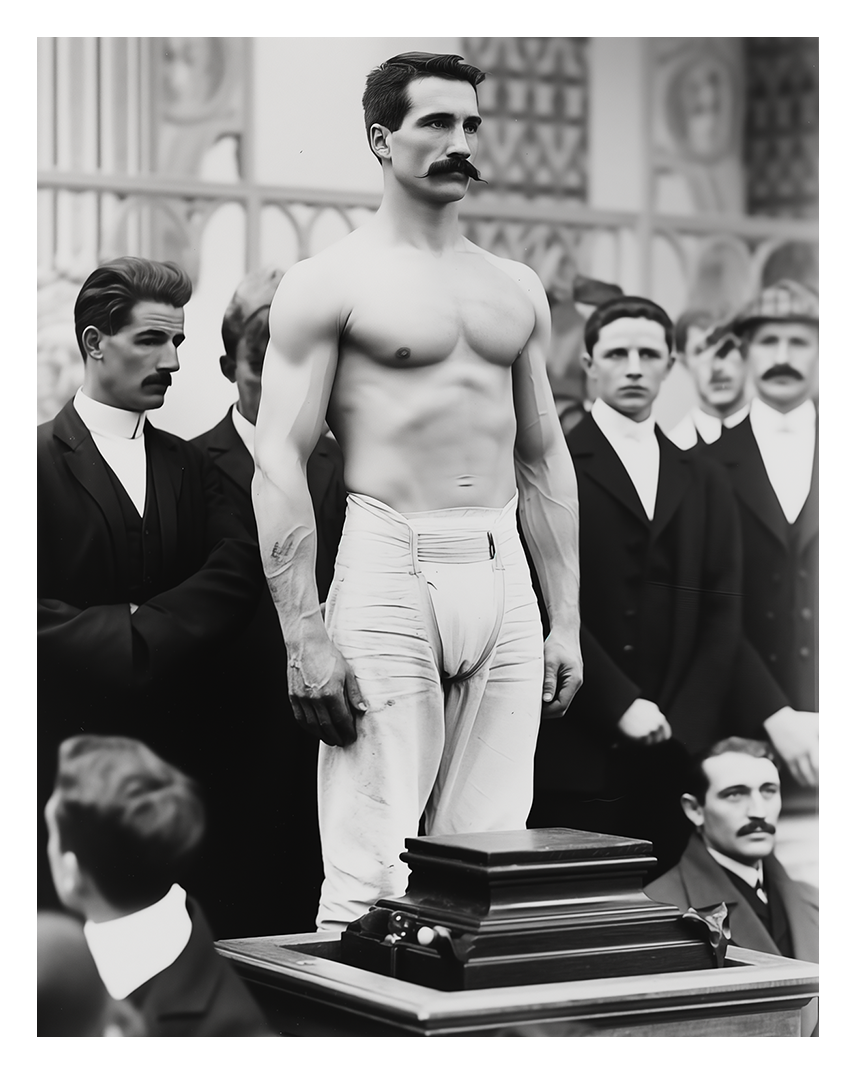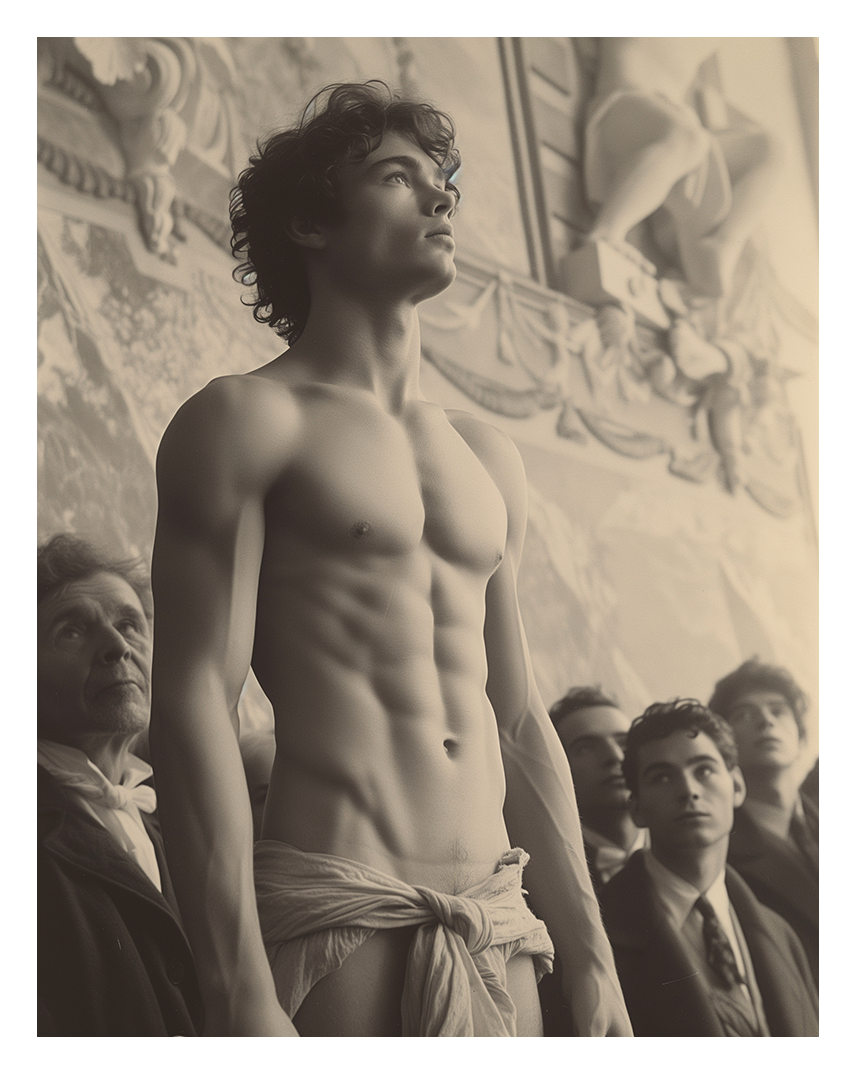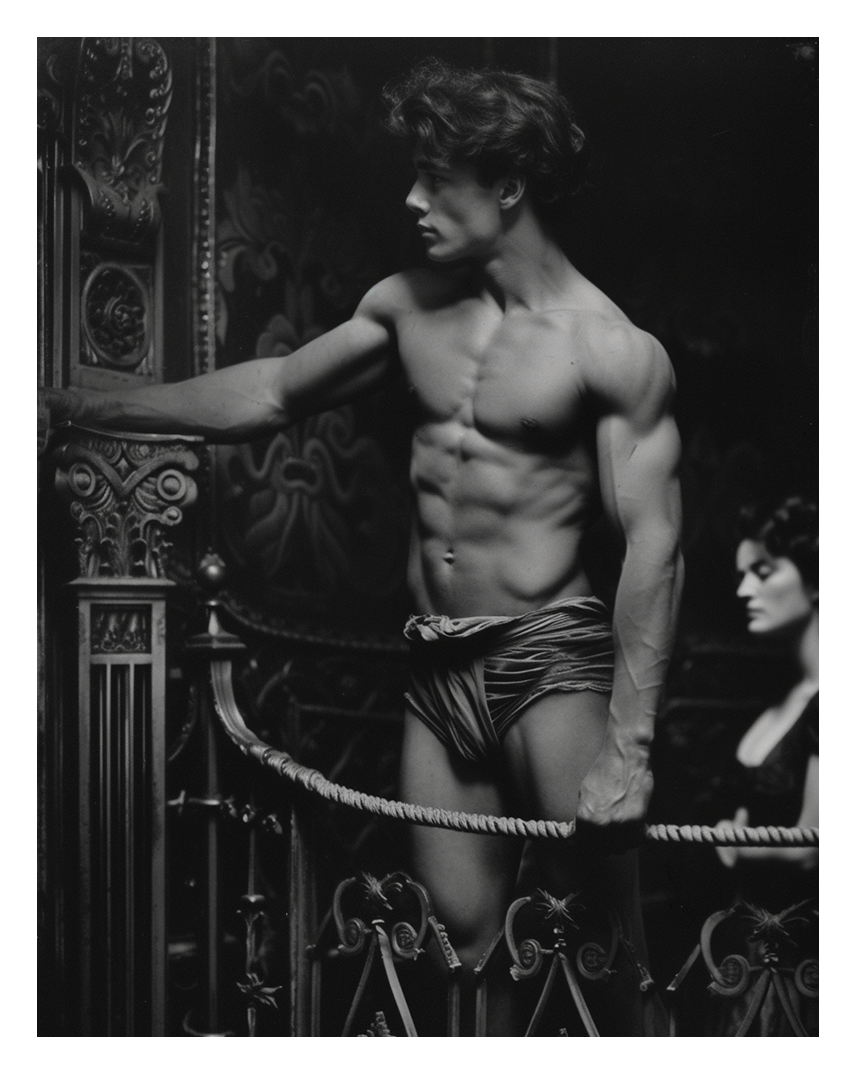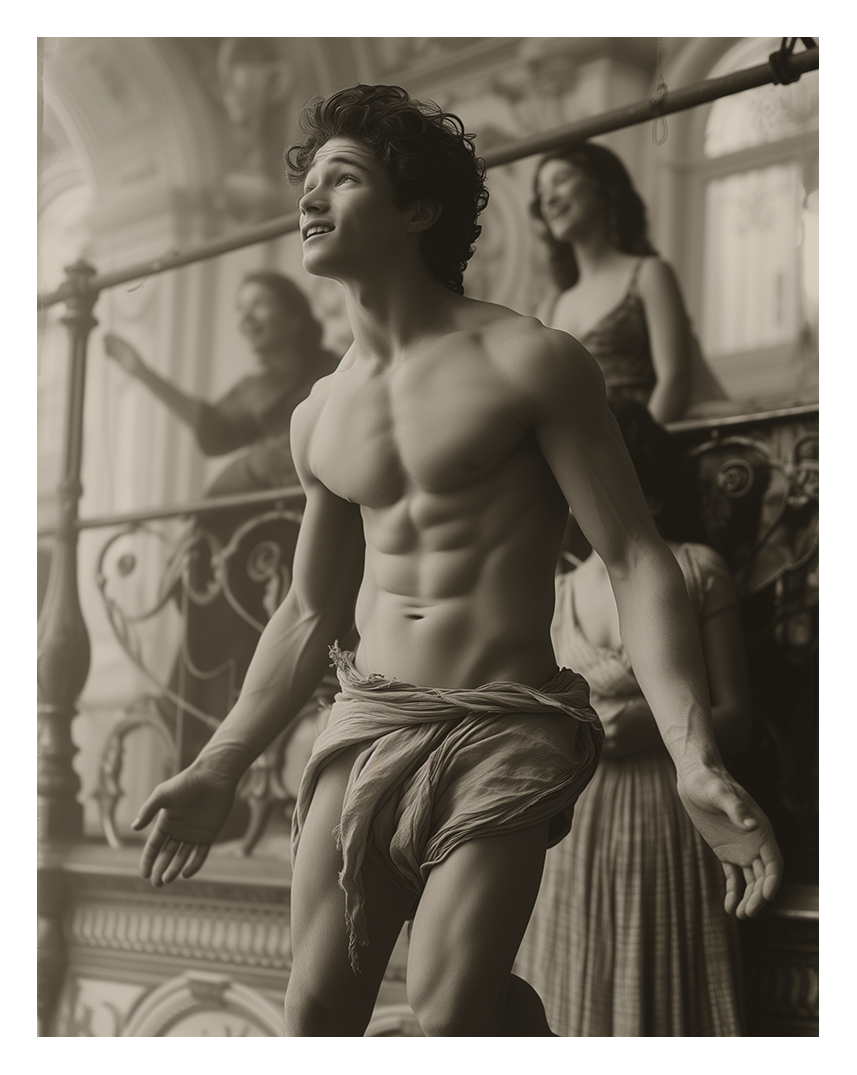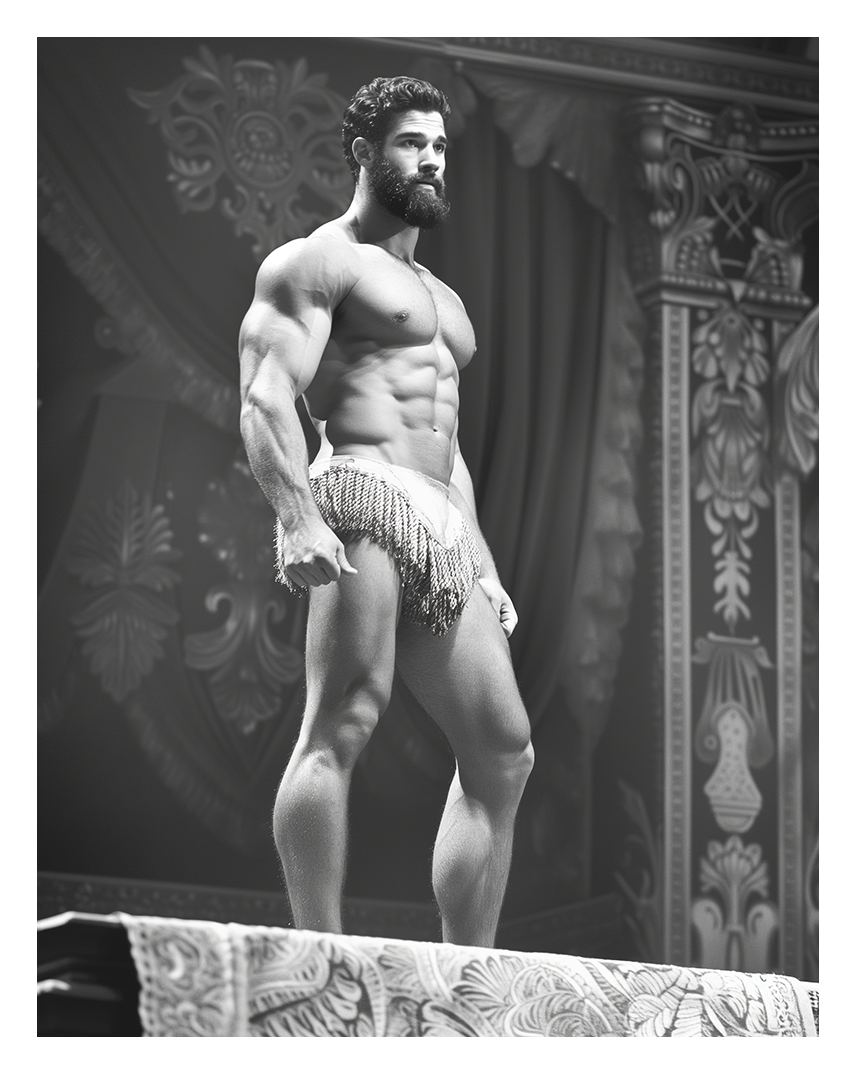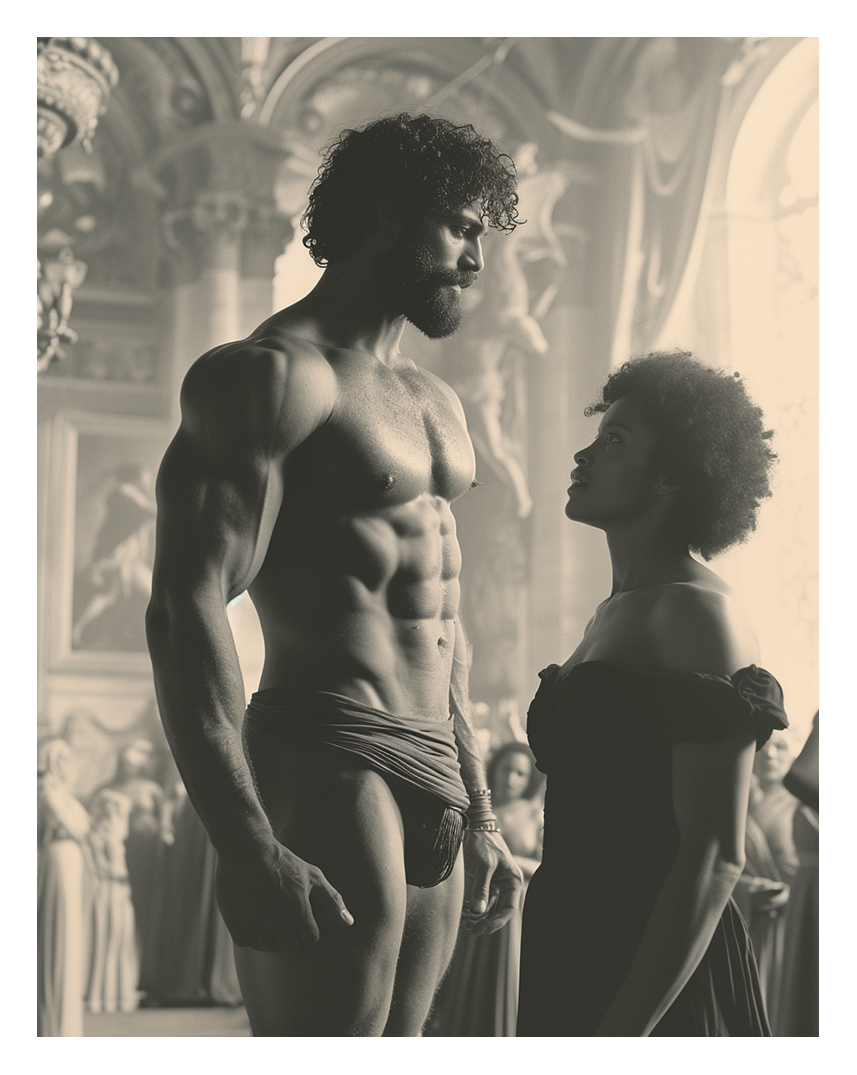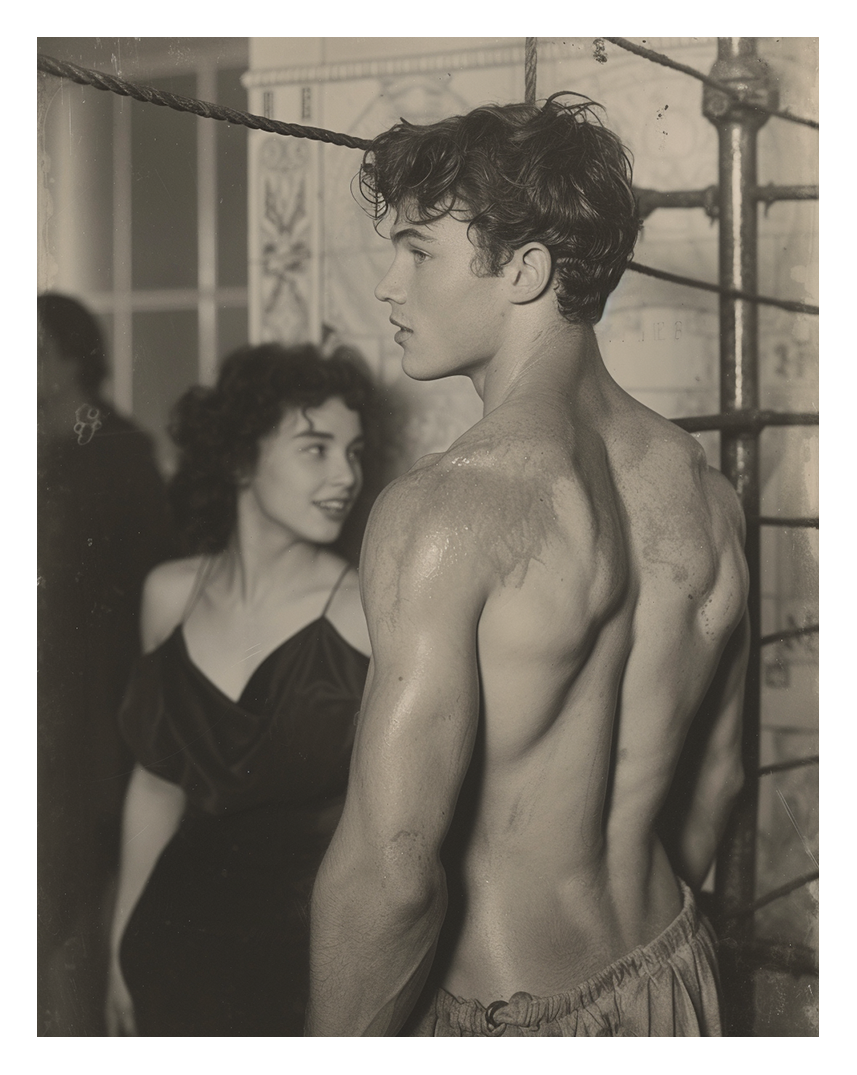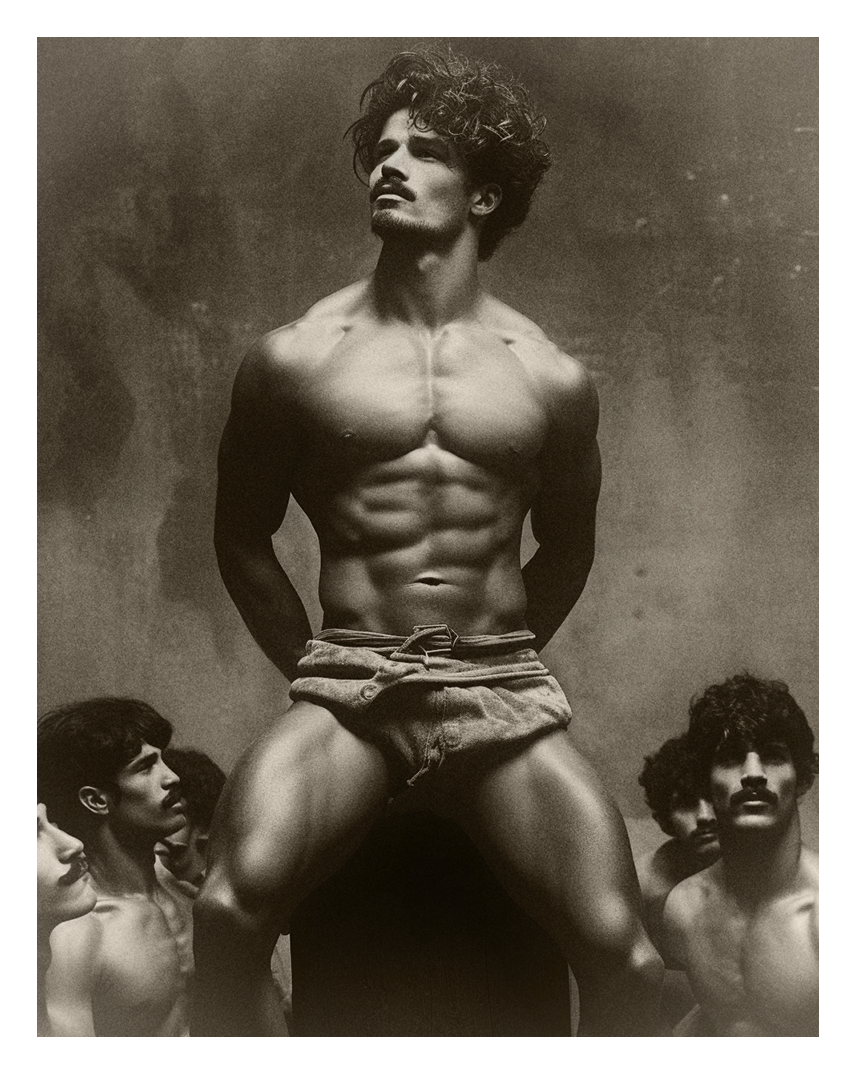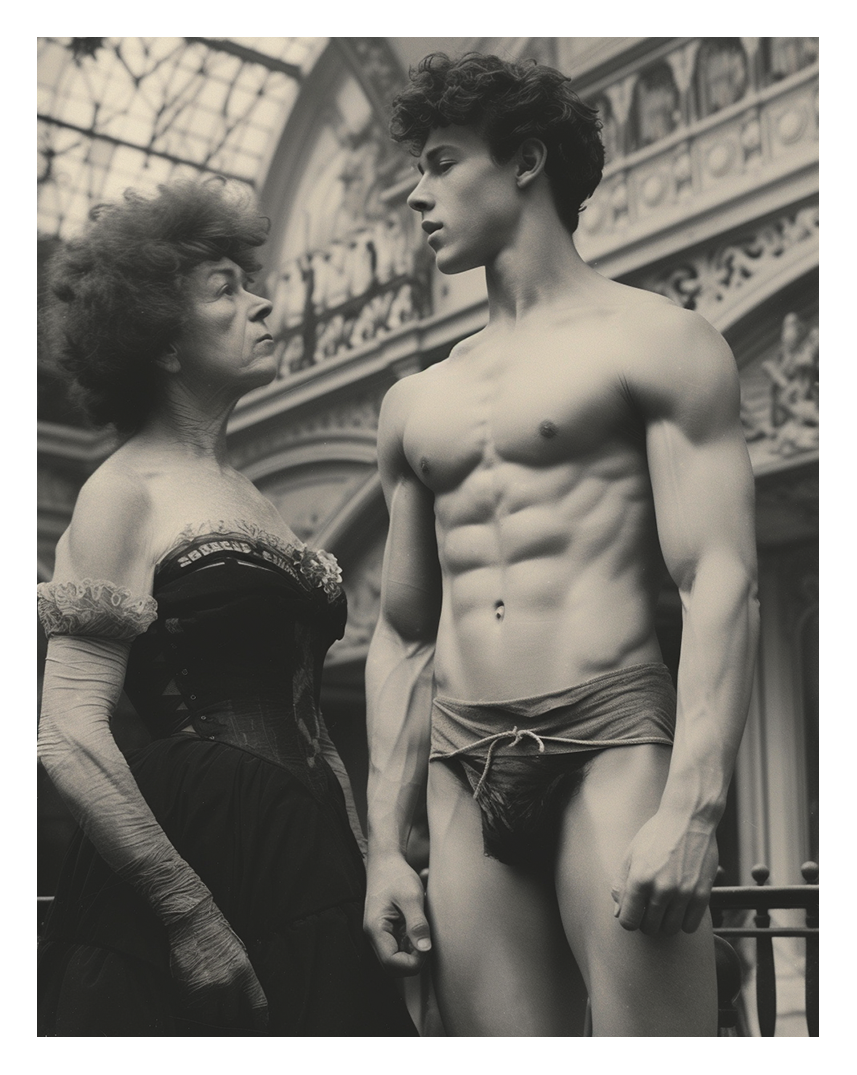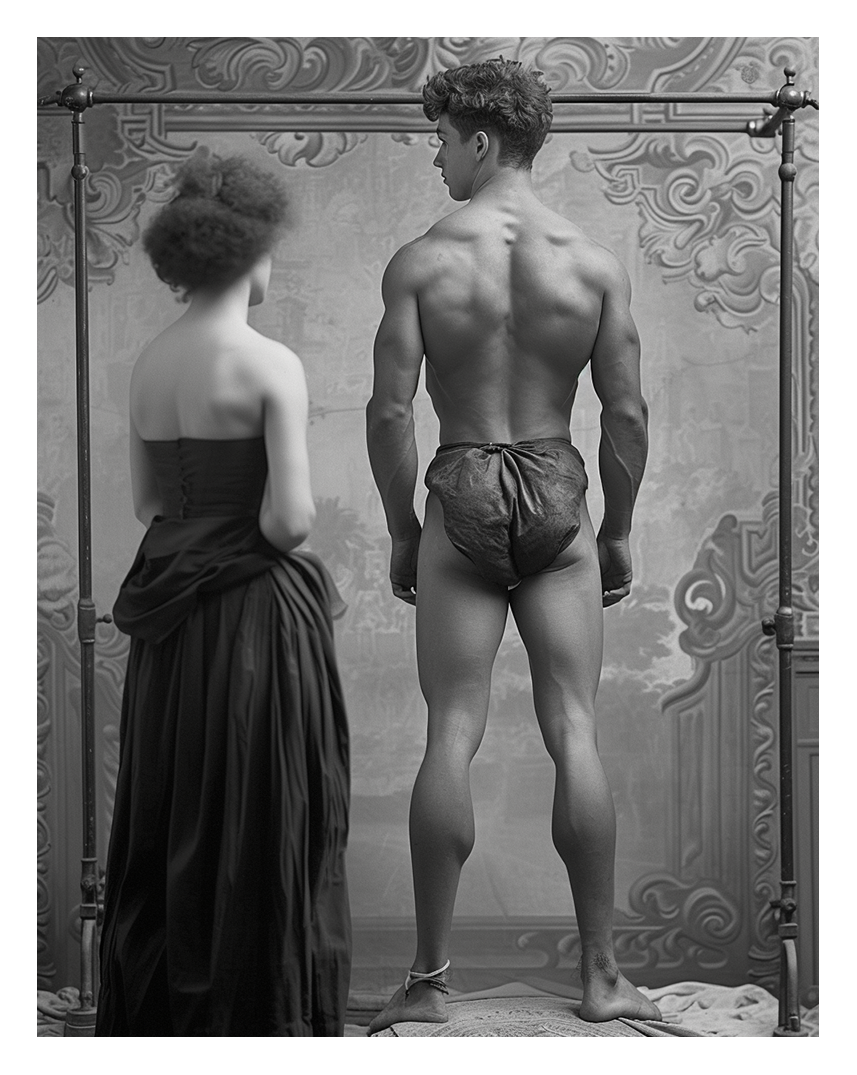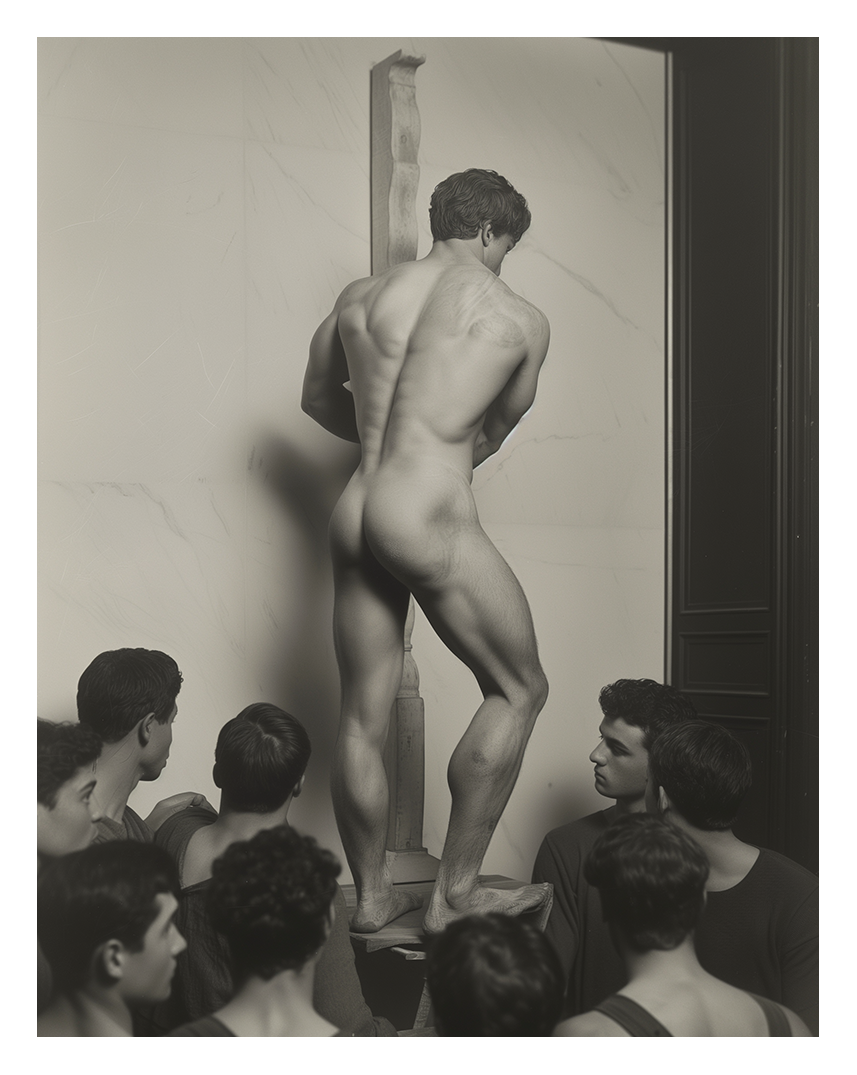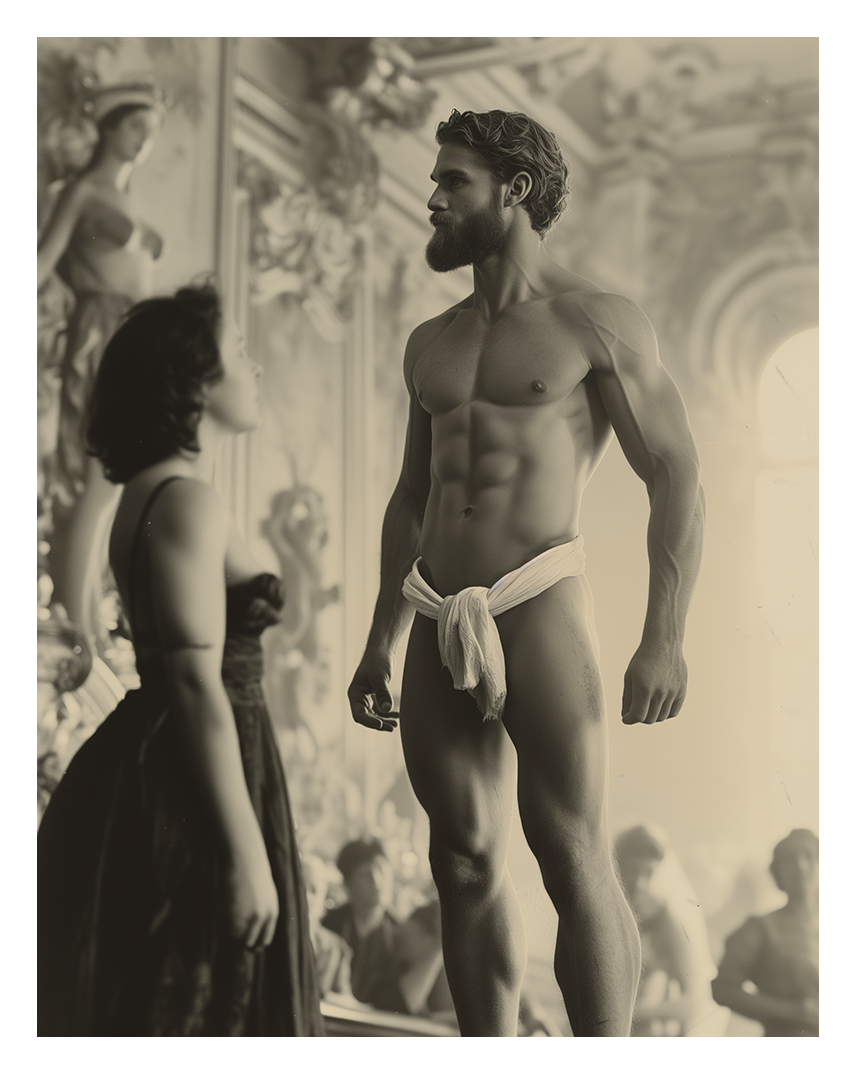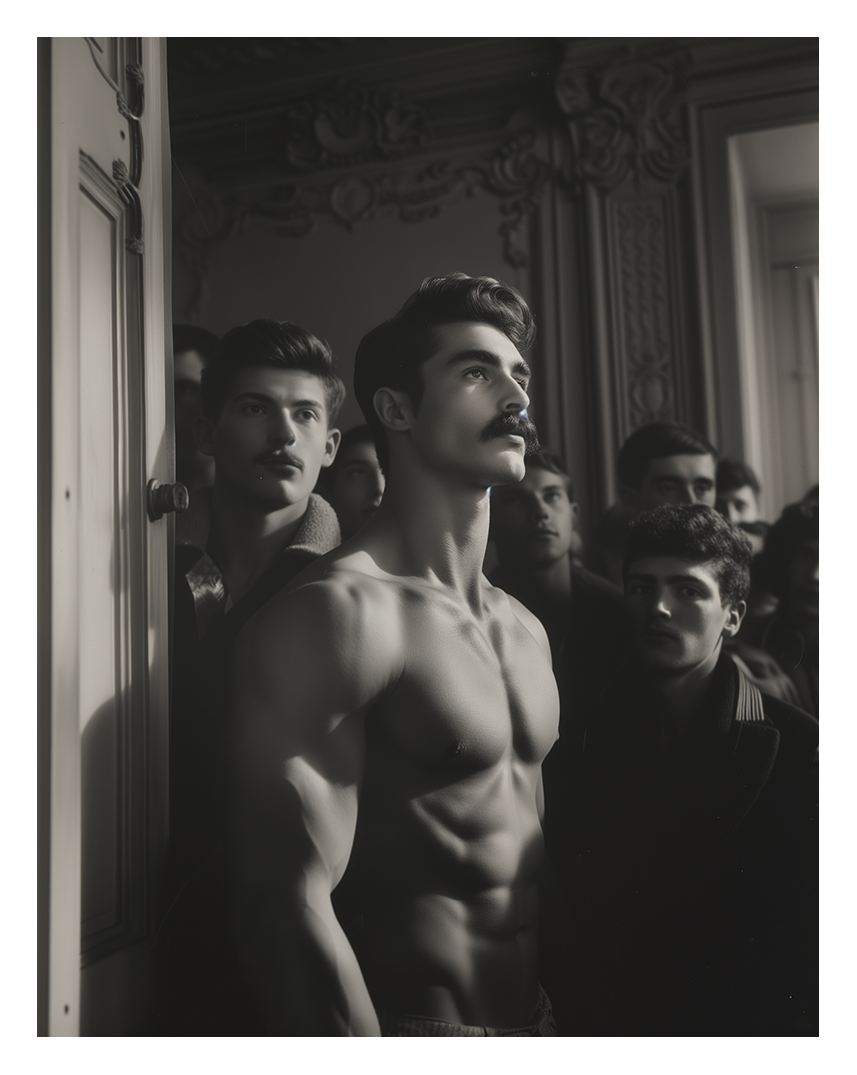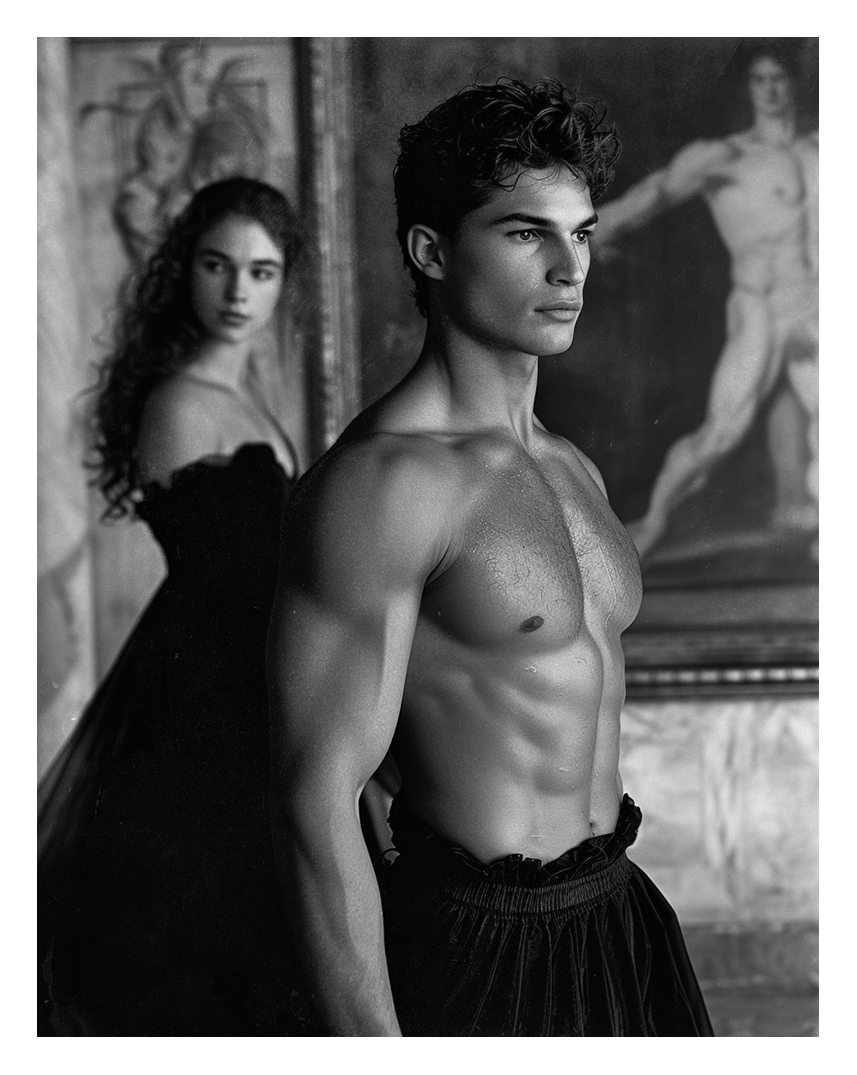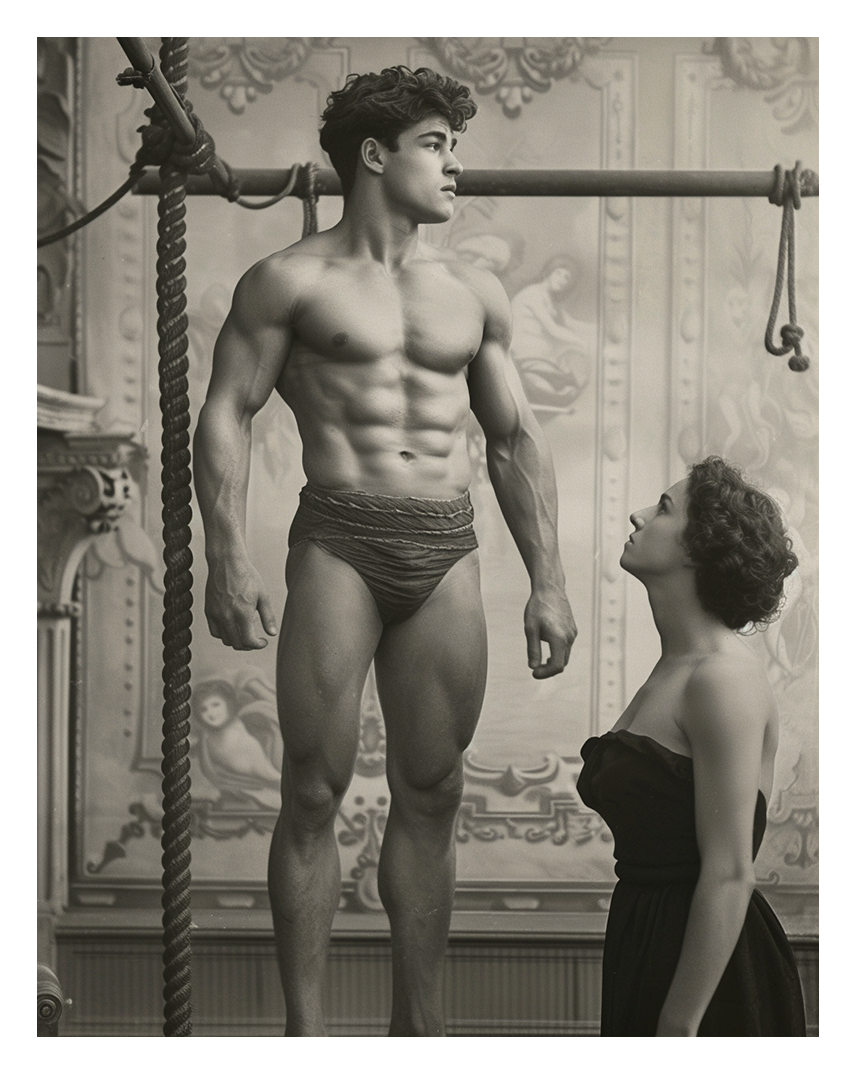MORNING VISITS
LIMITED EDITION PRINT CATALOGUE
Updated as of January 2024
In mid-19th century Paris, a unique and rather unconventional practice emerged within the art world known as the “Morning Visits.” During this time, select museums began an experimental program where young male athletes were employed to pose as living statues. These Morning Visits occurred between 10 am and 11 am on Fridays and were exclusively reserved for female patrons, offering them a culturally refined and yet titillating experience.
The rationale behind this innovative program was steeped in the contemporary beliefs about art and its observers. It was posited that women, regarded during that era as the more aesthetically sensitive gender, would benefit from a dedicated space where they could contemplate the human form unfettered by the presence of men. This experience was not merely about art; it was a delicate interplay between education, aesthetics, and the subtle thrill of sanctioned voyeurism. These young men, often chosen for their Adonis-like physiques, would stand motionless, emulating famous works of sculpture, thus bringing a new dimension to the appreciation of art and the human form. The work for these young men was physically demanding; maintaining the perfect poise and grace of a sculpture required not only muscle control but also an exceptional level of endurance. Their diligence in practice was crucial, as even the slightest movement could disrupt the illusion of life imitating art. Due to the physical strain involved in striking and holding these poses, the Morning Visits were deliberately kept brief, lasting only one hour. This practice not only illustrated the strength and discipline of the athletes but also reflected the era's fascination with the aesthetics of the human form, blending artistry with a performance that would be etched in the annals of Parisian cultural history.
However, the practice began to draw criticism and eventually ceased after several years. The reasons were manifold; cultural shifts began to question the propriety of such displays, there were concerns about the objectification of the human body, and debates about the blurring lines between art, entertainment, and voyeurism. Additionally, the increasing availability of photography provided an alternative means for studying the human figure without the need for such controversial live sessions. The Morning Visits remain a peculiar and short-lived chapter in the history of Parisian museums, indicative of the evolving boundaries of art and society.
The power of these images lies in their ability to intertwine the observer and the observed, playing on the dynamic concepts of the "gaze" and voyeurism. The "gaze," a term deeply explored in academic and feminist discourse, refers to the act of seeing and being seen, and how power is negotiated through this visual engagement. In the context of these images, the gaze is multilayered, implicating the viewer in a silent conversation with the subjects. We are not just spectators of the athletes' sculptural forms; we are also witnesses to the onlookers within the images, who are themselves captured in moments of scrutiny and admiration. This creates a double layer of voyeurism—an interplay of gazes that invites introspection about the nature of observation and the objectification inherent in art.
These stirring depictions also prompt us to reflect on the concept of voyeurism—not merely as a clandestine act of watching but as a deeper, more intrinsic part of the human experience. They explore the boundaries between public and private observation, between admiration and desire, between the celebration of form and the potential for objectification. The athletes, frozen in time, suggest an eternal moment of aesthetic perfection, while the observers represent the ever-changing perspectives of society. These creations, though fictional, delve into the deep-seated human inclination to observe and appreciate beauty, exploring the intricate relationship between the viewer, the viewed, and the medium through which art is experienced.
The "Morning Visits" series is as much a product of imagination as it is a technological marvel. The story of the Morning Visits was created by Troy Schooneman as a work of fiction, which is currently being expanded into a short novel. Each of the images in the series was meticulously crafted by Troy Schooneman using a combination of AI and other digital software, including Procreate, Photoshop, as well as other art software applications, including filter and human face manipulation applications. This marriage of technology and artistic vision and imagination not only enhances the visual impact of each piece but also adds a layer of contemporary relevance. It reflects a world where digital and human creativity and emotion intertwine,
To purchase images from the Morning Visits collection, click on the thumbnail of your desired image below.
